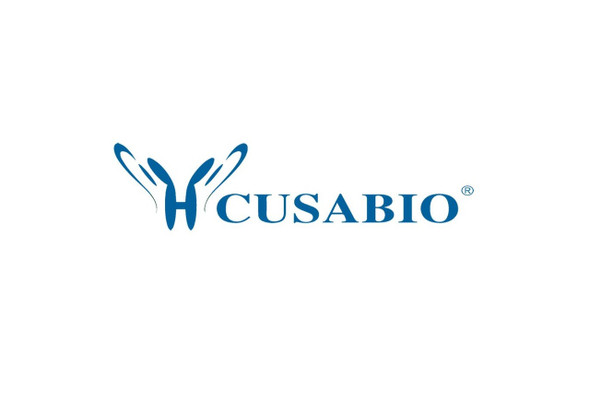Cusabio Human Recombinants
Recombinant Human Podocalyxin protein (PODXL), partial | CSB-YP518830HU
- SKU:
- CSB-YP518830HU
- Availability:
- 3 - 7 Working Days
Description
Recombinant Human Podocalyxin protein (PODXL), partial | CSB-YP518830HU | Cusabio
Alternative Name(s): GCTM-2 antigen;Gp200Podocalyxin-like protein 1 ;PC ;PCLP-1
Gene Names: PODXL
Research Areas: Cancer
Organism: Homo sapiens (Human)
AA Sequence: QNATQTTTDSSNKTAPTPASSVTIMATDTAQQSTVPTSKANEILASVKATTLGVSSDSPGTTTLAQQVSGPVNTTVARGGGSGNPTTTIESPKSTKSADTTTVATSTATAKPNTTSSQNGAEDTTNSGGKSSHSVTTDLTSTKAEHLTTPHPTSPLSPRQPTSTHPVATPTSSGHDHLMKISSSSSTVAIPGYTFTSPGMTTTLLETVFHHVSQAGLELLTSGDLPTLASQSAGITASSVISQRTQQTSSQMPASSTAPSSQETVQPTSPATALRTPTLPETMSSSPTAASTTHRYPKTPSPTVAHESNWAKCEDLETQTQSEKQLVLNLTGNTLCAGGASDEKLISLICRAVKATFNPAQDKCGIRLASVPGSQTVVVKEITIHTKLPAKDVYERLKDKWDELKEAGVSDMKLGDQGPPEEAEDRF
Source: Yeast
Tag Info: N-terminal 6xHis-tagged
Expression Region: 32-458aa
Sequence Info: Partial
MW: 46.2 kDa
Purity: Greater than 90% as determined by SDS-PAGE.
Relevance: Involved in the regulation of both adhesion and cell morphology and cancer progression. Function as an anti-adhesive molecule that maintains an open filtration pathway between neighboring foot processes in the podocyte by charge repulsion. Acts as a pro-adhesive molecule, enhancing the adherence of cells to immobilized ligands, increasing the rate of migration and cell-cell contacts in an integrin-dependent manner. Induces the formation of apical actin-dependent microvilli. Involved in the formation of a preapical plasma mbrane subdomain to set up inital epithelial polarization and the apical lumen formation during renal tubulogenesis. Plays a role in cancer development and aggressiveness by inducing cell migration and invasion through its interaction with the actin-binding protein EZR. Affects EZR-dependent signaling events, leading to increased activities of the MAPK and PI3K pathways in cancer cells.
Reference: Molecular cloning and characterization of human podocalyxin-like protein. Orthologous relationship to rabbit PCLP1 and rat podocalyxin.Kershaw D.B., Beck S.G., Wharram B.L., Wiggins J.E., Goyal M., Thomas P.E., Wiggins R.C.J. Biol. Chem. 272:15708-15714(1997)
Storage: The shelf life is related to many factors, storage state, buffer ingredients, storage temperature and the stability of the protein itself. Generally, the shelf life of liquid form is 6 months at -20?/-80?. The shelf life of lyophilized form is 12 months at -20?/-80?.
Notes: Repeated freezing and thawing is not recommended. Store working aliquots at 4? for up to one week.
Function: Involved in the regulation of both adhesion and cell morphology and cancer progression. Function as an anti-adhesive molecule that maintains an open filtration pathway between neighboring foot processes in the podocyte by charge repulsion. Acts as a pro-adhesive molecule, enhancing the adherence of cells to immobilized ligands, increasing the rate of migration and cell-cell contacts in an integrin-dependent manner. Induces the formation of apical actin-dependent microvilli. Involved in the formation of a preapical plasma membrane subdomain to set up inital epithelial polarization and the apical lumen formation during renal tubulogenesis. Plays a role in cancer development and aggressiveness by inducing cell migration and invasion through its interaction with the actin-binding protein EZR. Affects EZR-dependent signaling events, leading to increased activities of the MAPK and PI3K pathways in cancer cells.
Involvement in disease:
Subcellular Location: Apical cell membrane, Cell projection, lamellipodium, Cell projection, filopodium, Cell projection, ruffle, Cell projection, microvillus, Membrane raft, Membrane, Single-pass type I membrane protein
Protein Families: Podocalyxin family
Tissue Specificity: Glomerular epithelium cell (podocyte).
Paythway:
Form: Liquid or Lyophilized powder
Buffer: If the delivery form is liquid, the default storage buffer is Tris/PBS-based buffer, 5%-50% glycerol. If the delivery form is lyophilized powder, the buffer before lyophilization is Tris/PBS-based buffer, 6% Trehalose, pH 8.0.
Reconstitution: We recommend that this vial be briefly centrifuged prior to opening to bring the contents to the bottom. Please reconstitute protein in deionized sterile water to a concentration of 0.1-1.0 mg/mL.We recommend to add 5-50% of glycerol (final concentration) and aliquot for long-term storage at -20?/-80?. Our default final concentration of glycerol is 50%. Customers could use it as reference.
Uniprot ID: O00592
HGNC Database Link: HGNC
UniGene Database Link: UniGene
KEGG Database Link: KEGG
STRING Database Link: STRING
OMIM Database Link: OMIM









